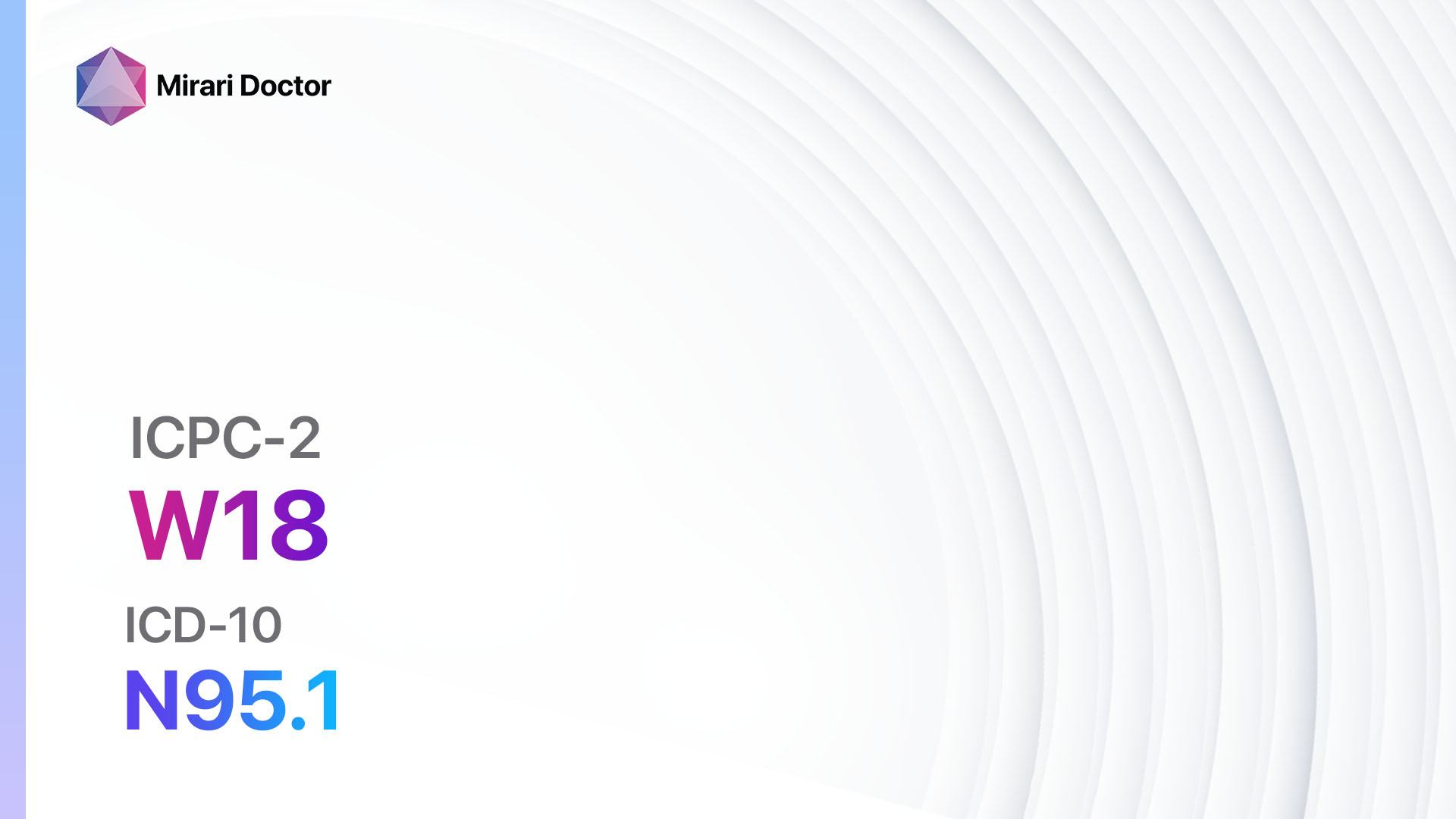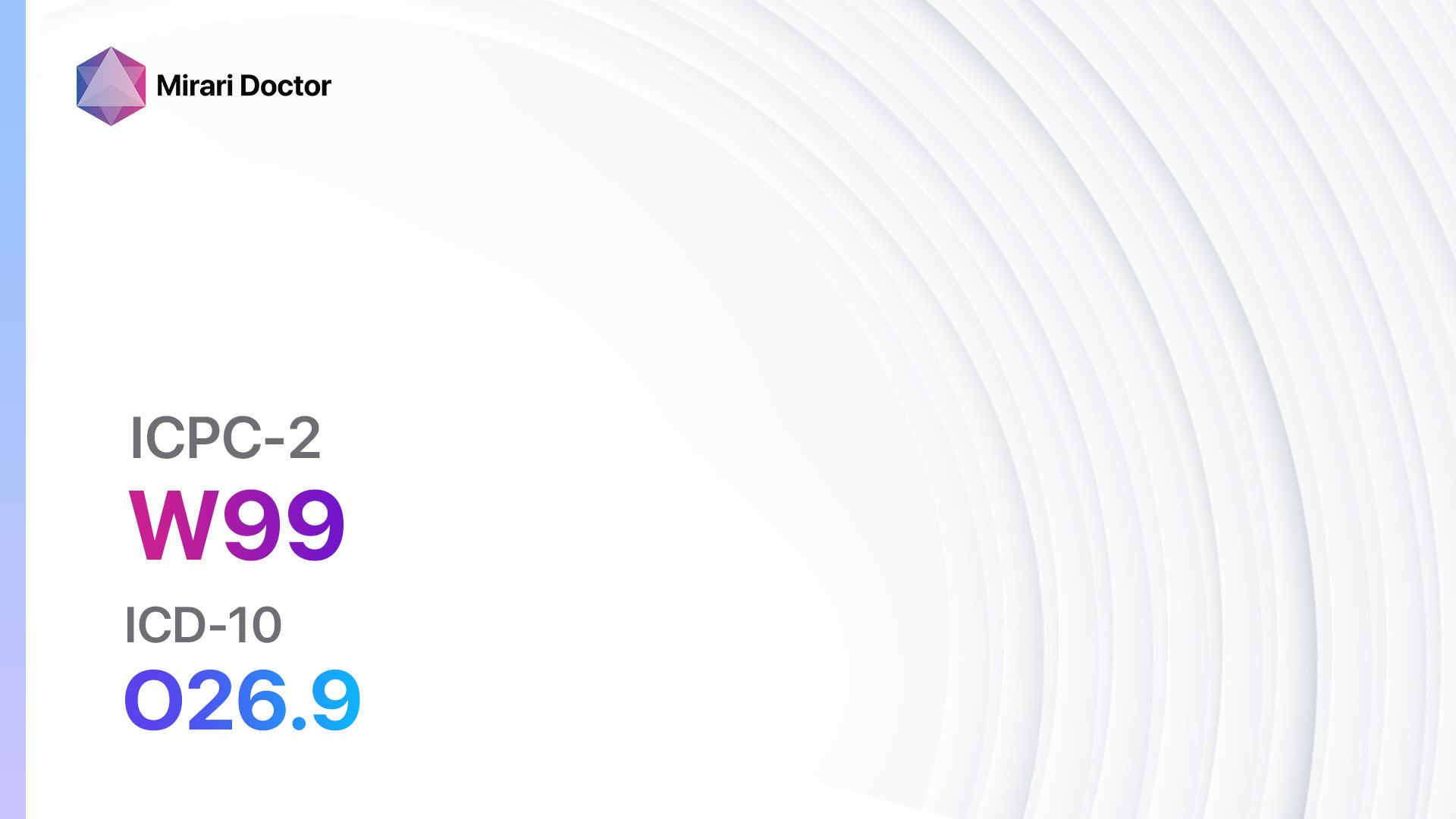
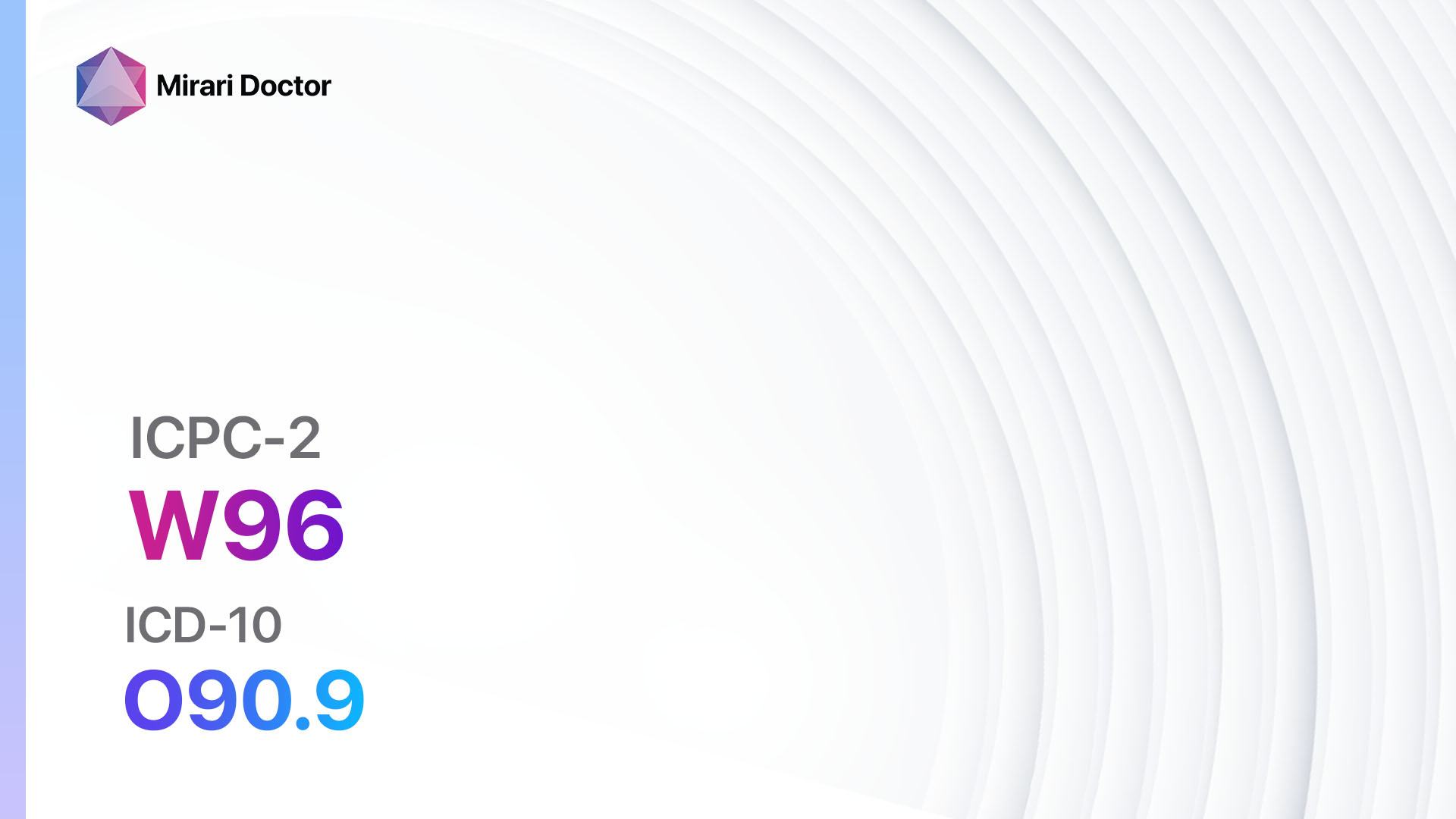
W96 Complications of puerperium other (ICD-10:O90.9)
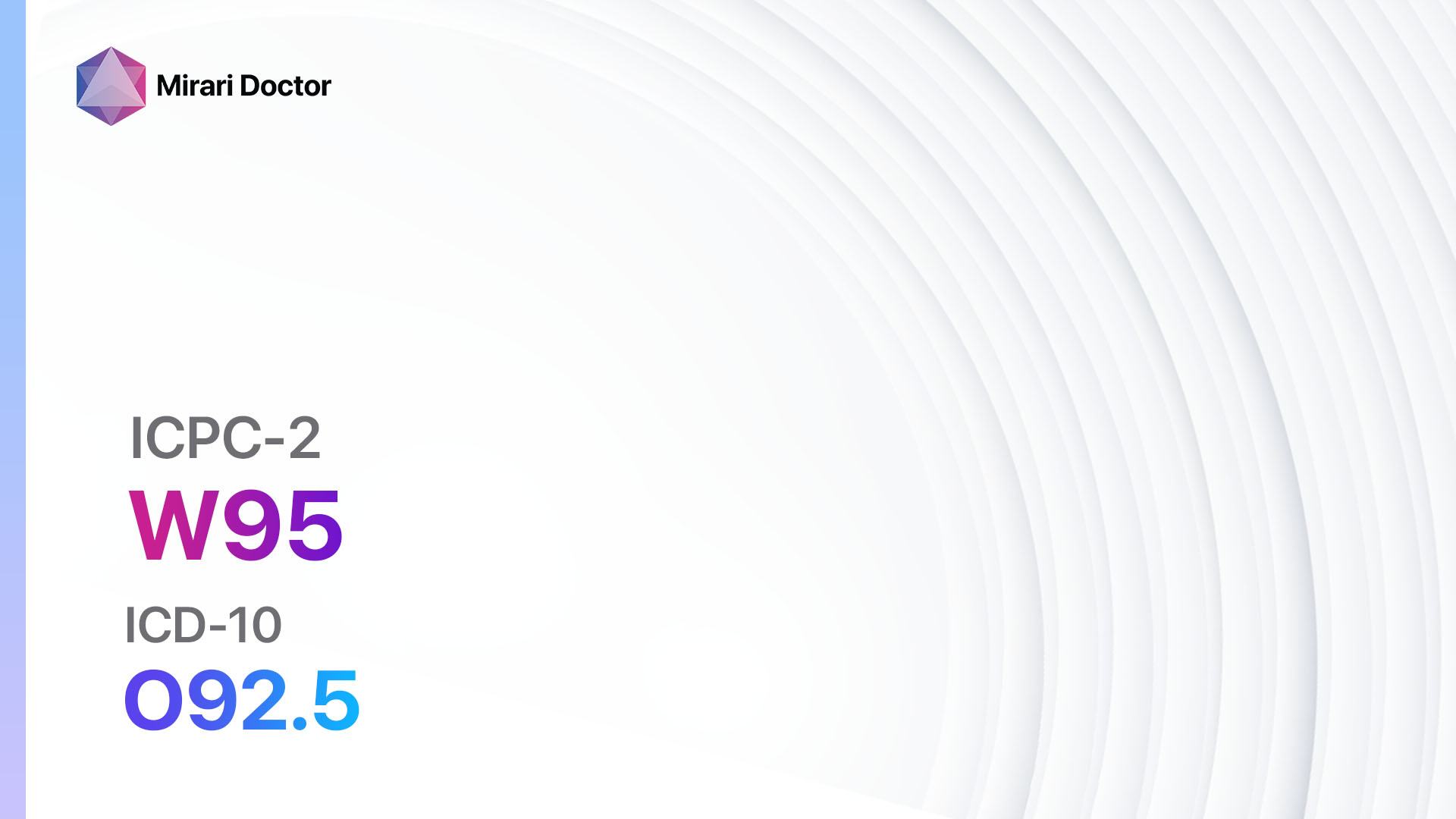
W95 Breast disorder in pregnancy/puerperium other (ICD-10:O92.5)
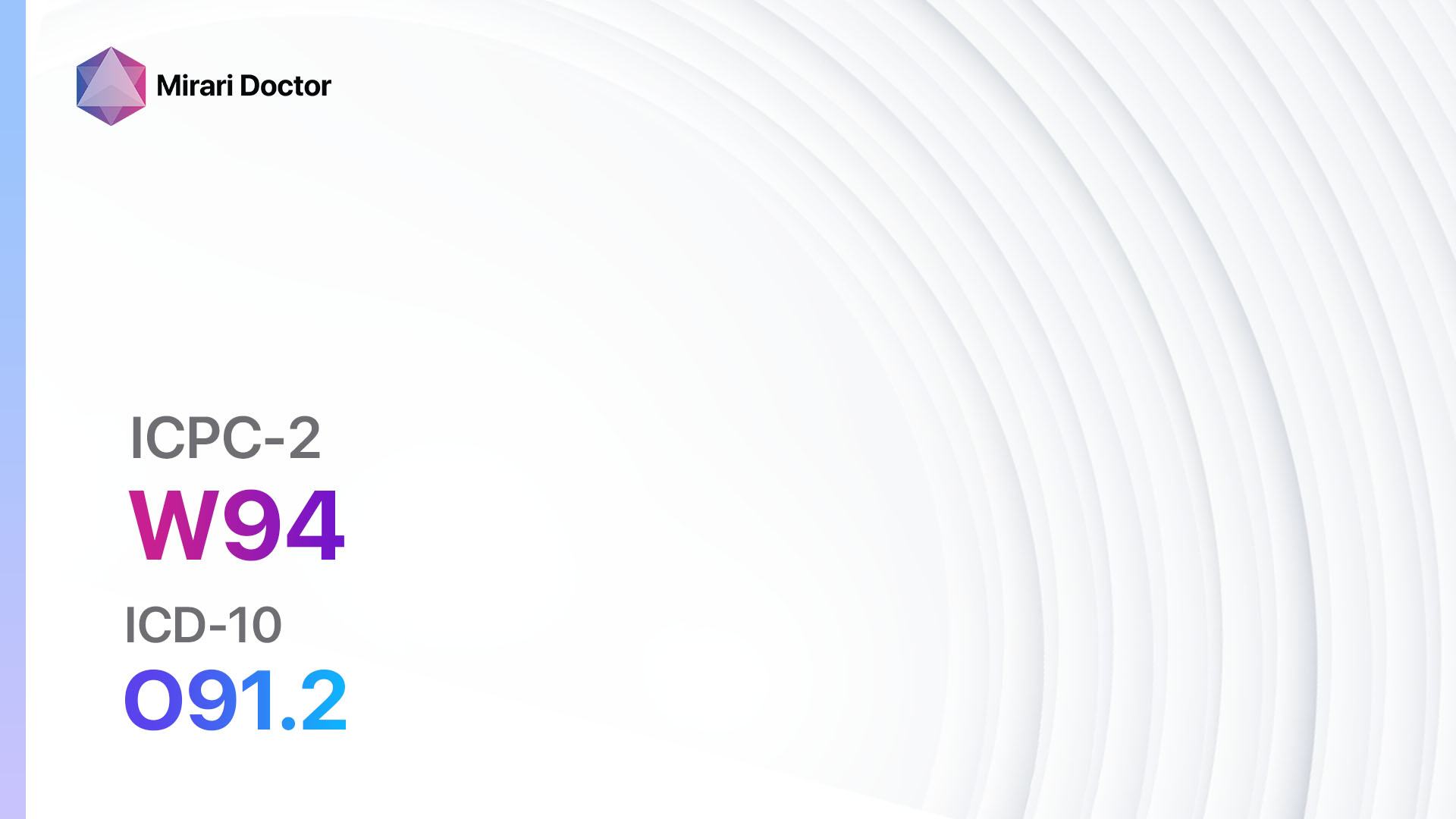
W94 Puerperal mastitis (ICD-10:O91.2)
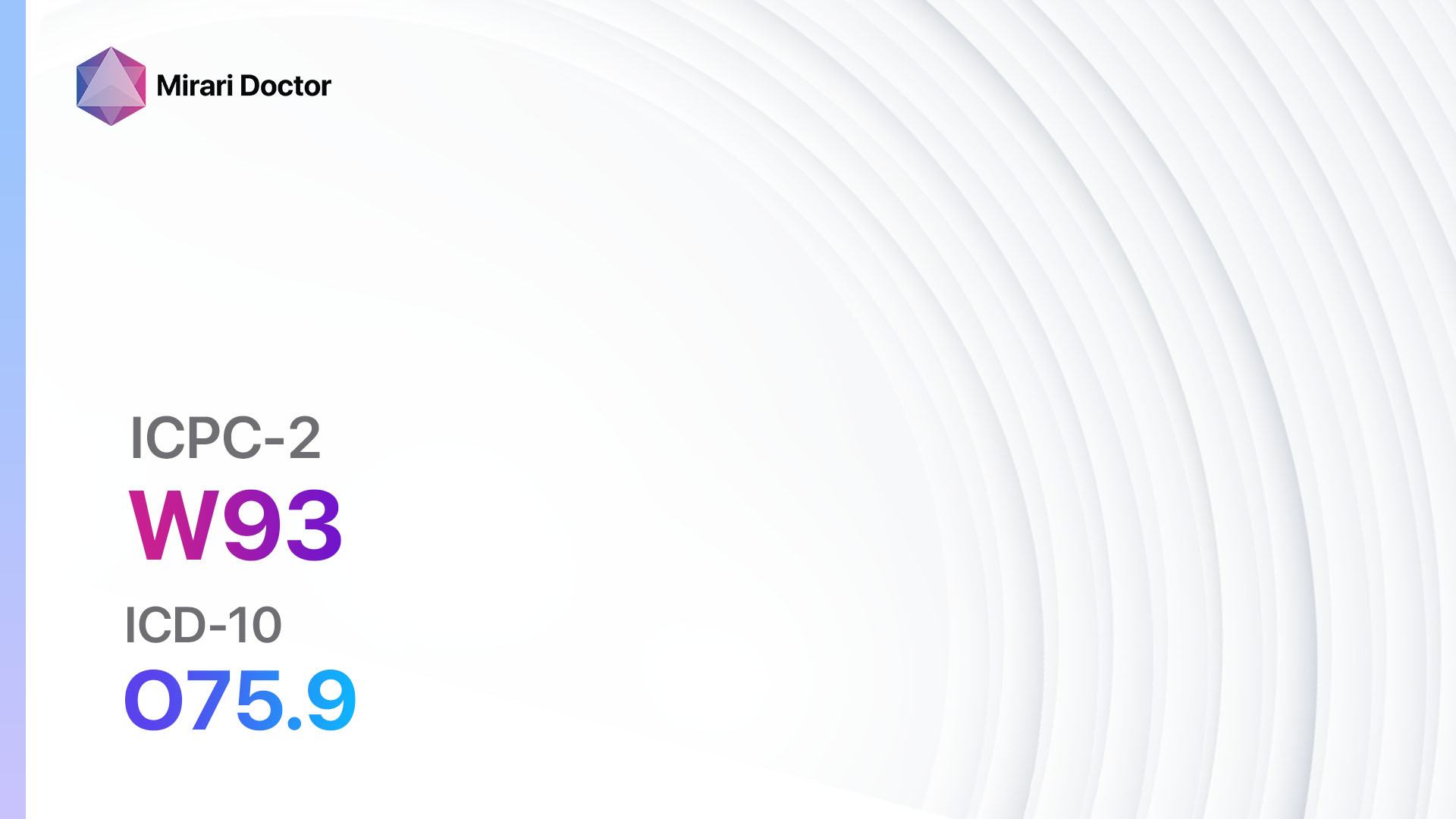
W93 Complicated labour/delivery live/stillbirth (ICD-10:O75.9)
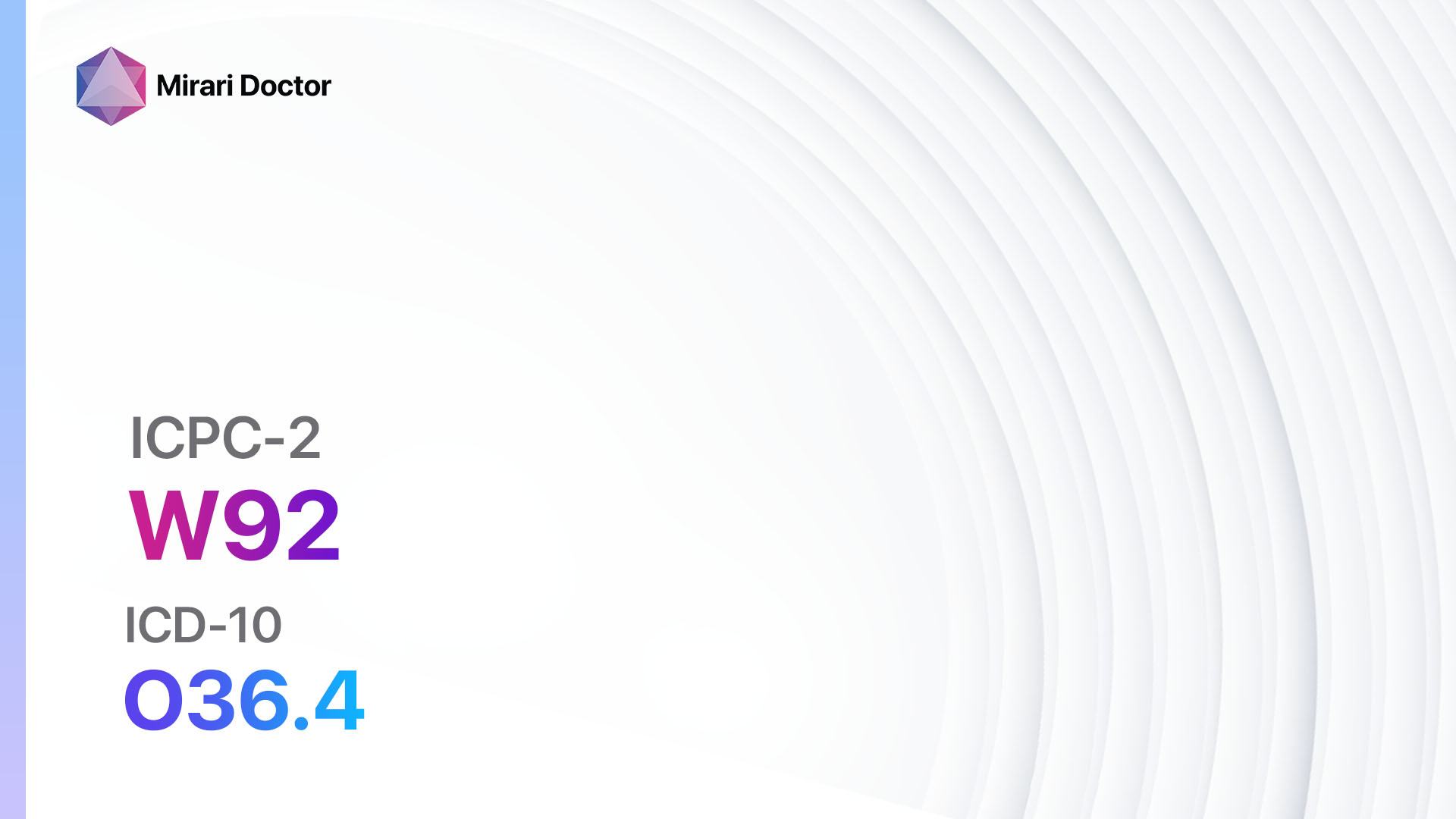
W92 Complicated labour/delivery stillbirth (ICD-10:O36.4)
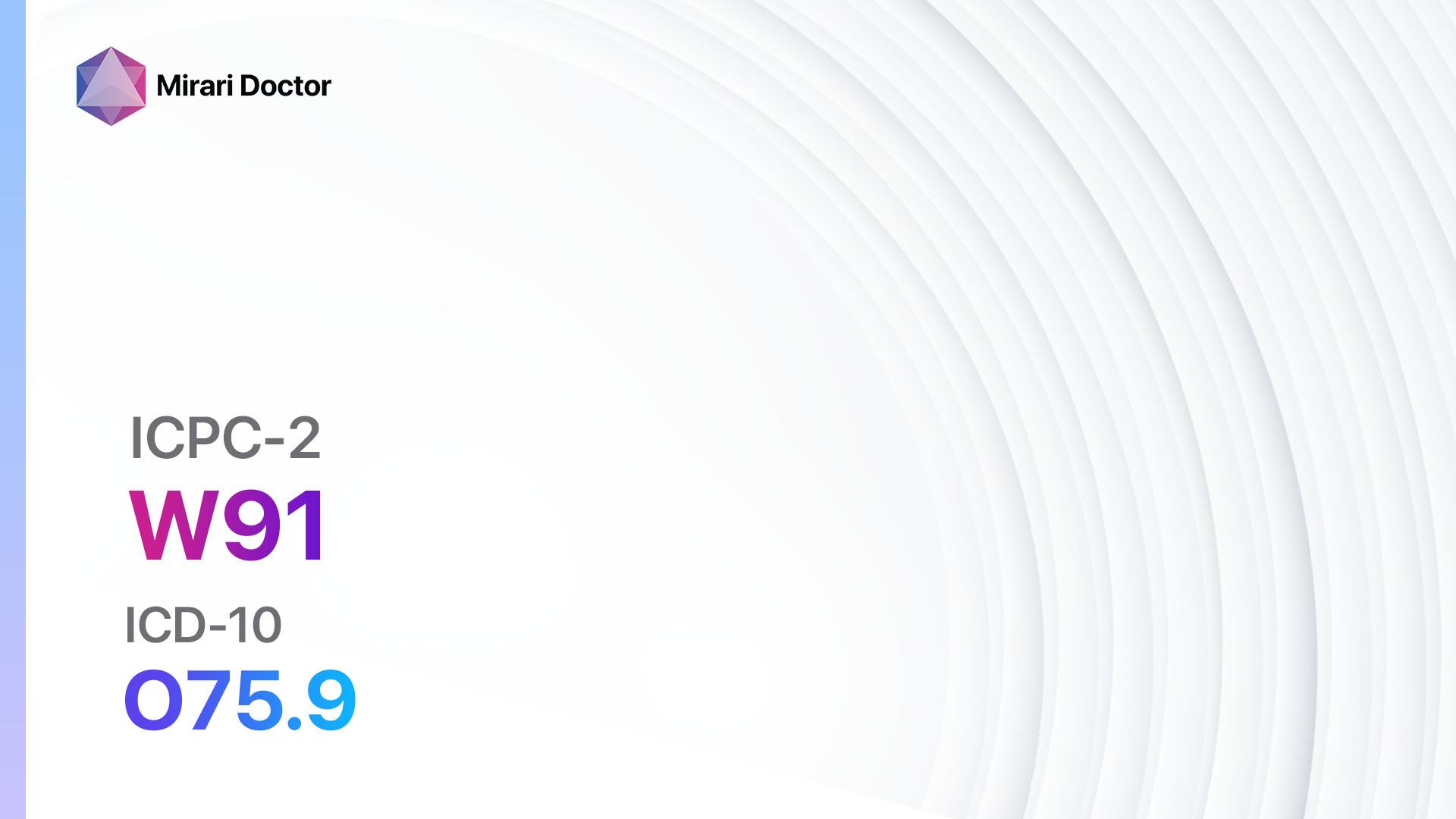
W91 Complicated labour/delivery live (ICD-10:O75.9)
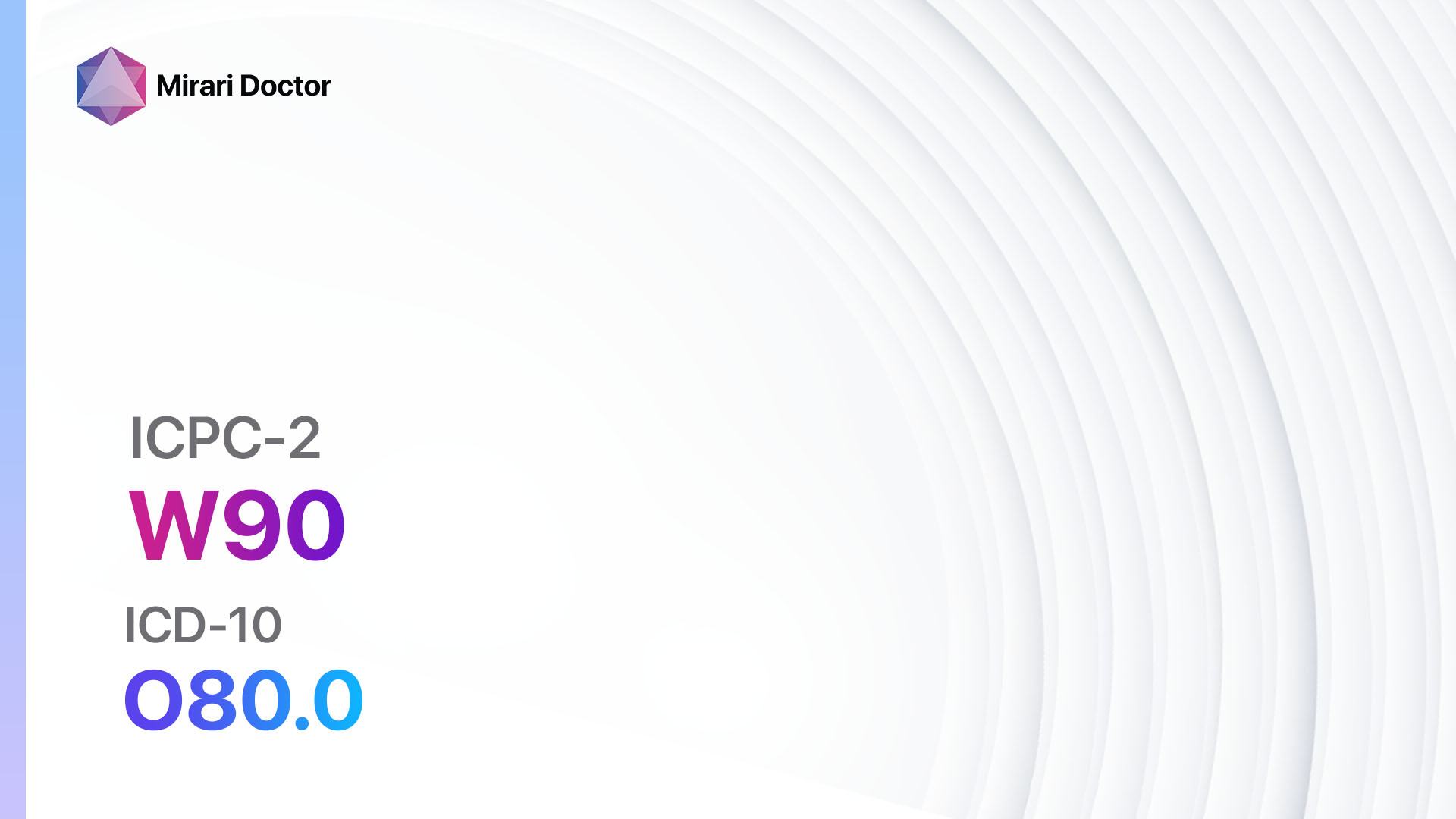
W90 Uncomplicated labour/delivery live (ICD-10:O80.0)
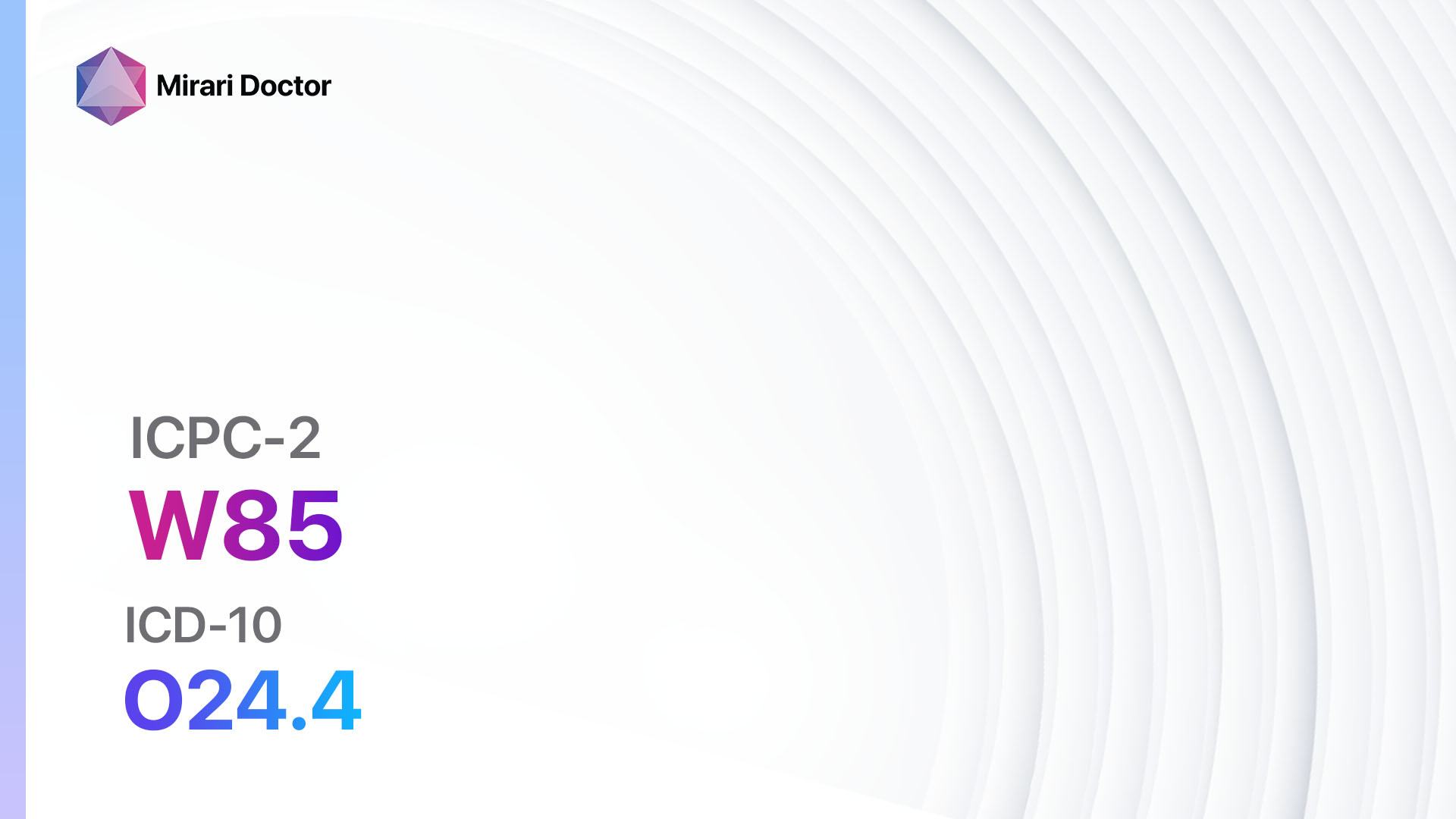
W85 Gestational diabetes (ICD-10:O24.4)

W84 Pregnancy high risk (ICD-10:Z35.9)
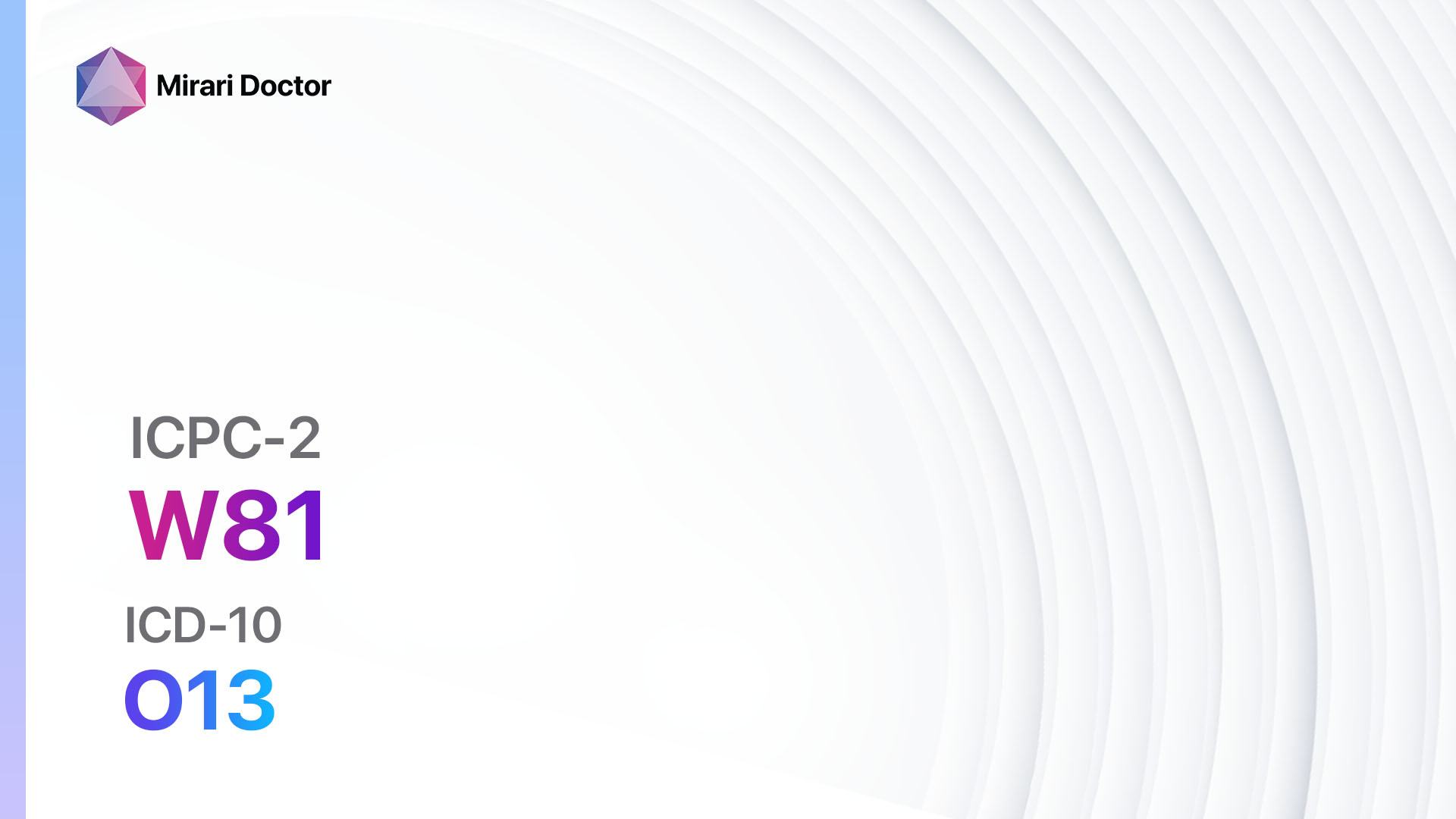
W81 Toxaemia of pregnancy (ICD-10:O13)
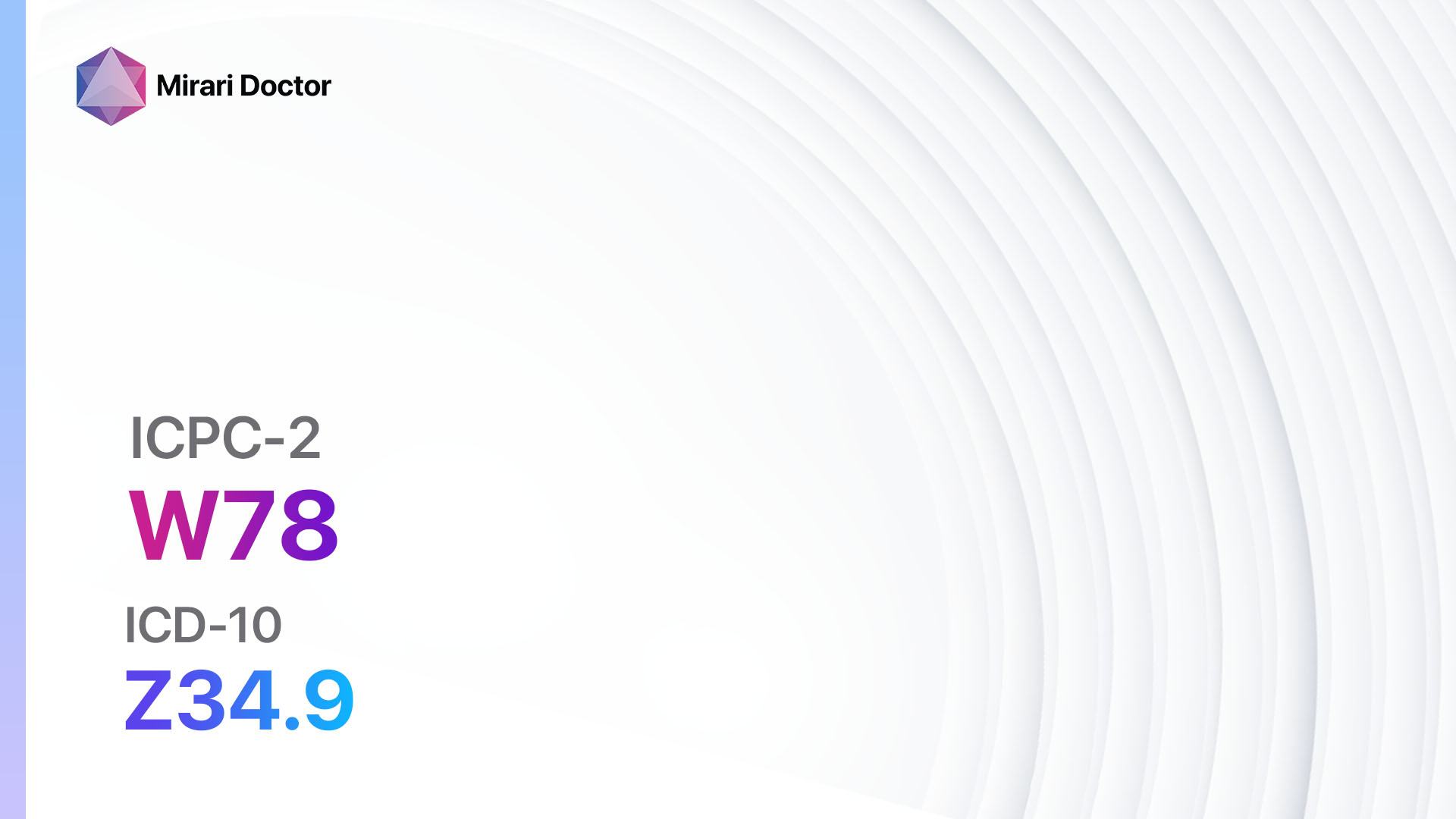
W78 Pregnancy (ICD-10:Z34.9)
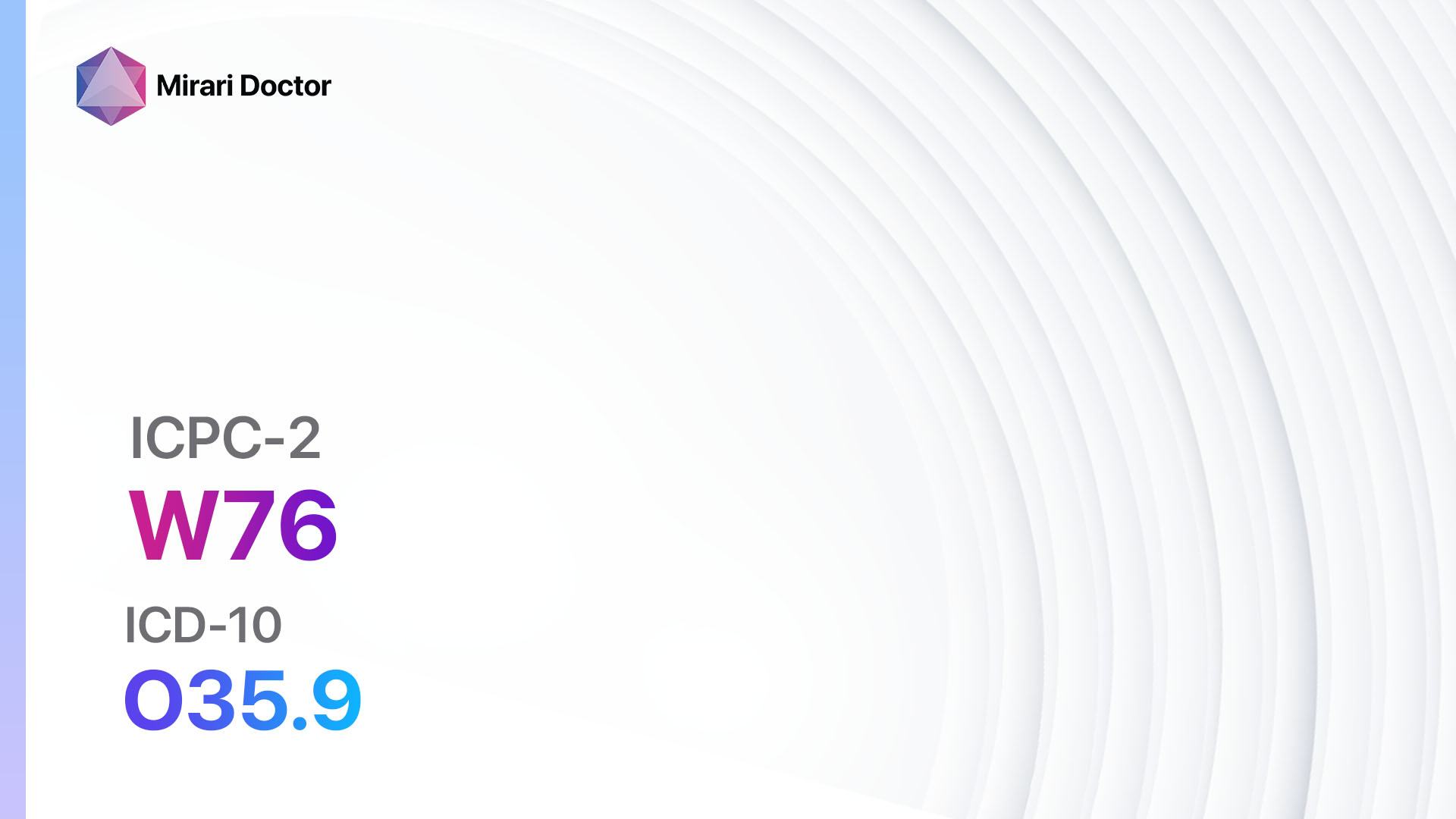
W76 Congenital anomaly complicating pregnancy (ICD-10:O35.9)
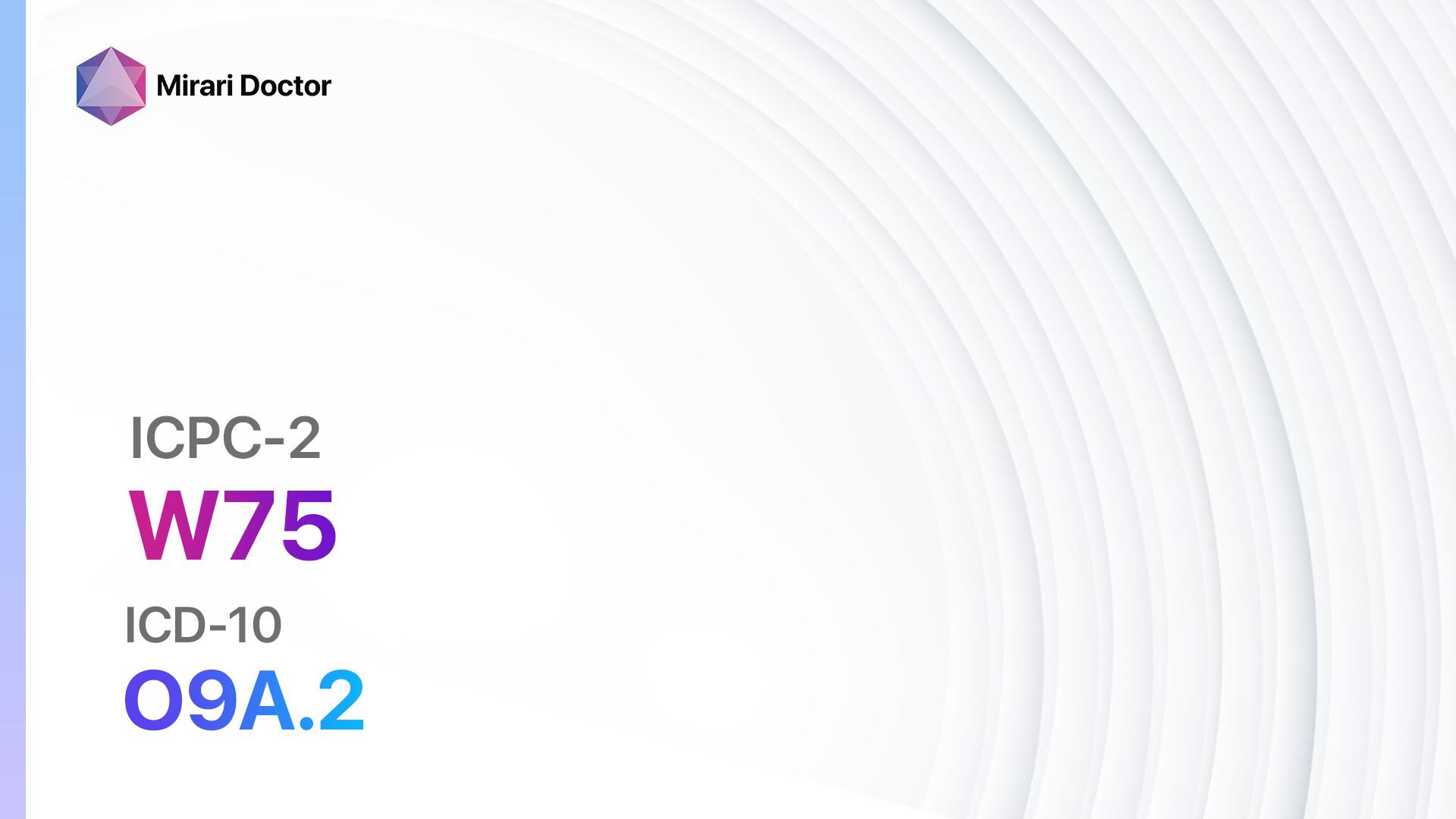
W75 Injury complicating pregnancy (ICD-10:O9A.2)
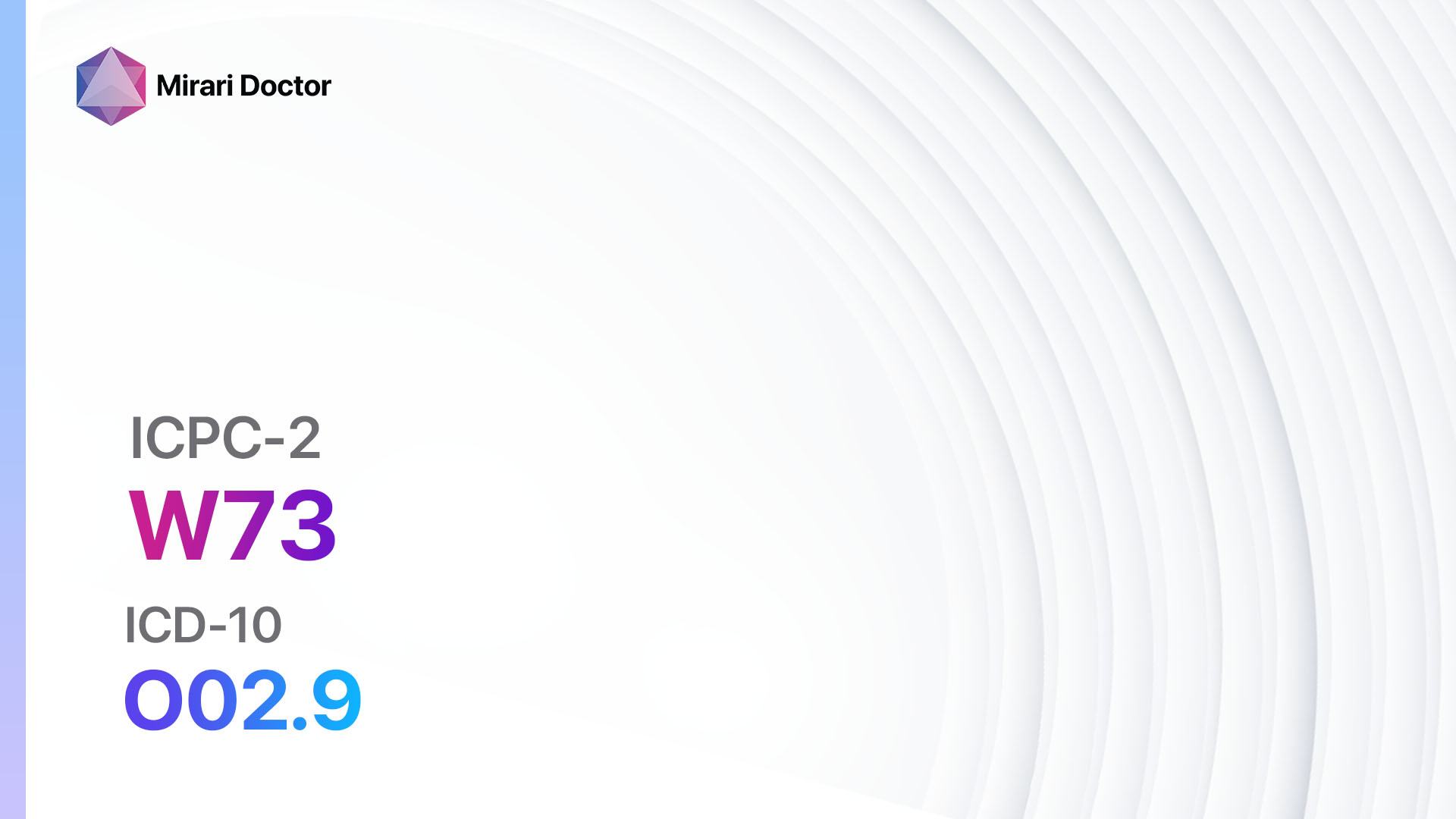
W73 Benign/unspec. neoplasm/pregnancy (ICD-10:O02.9)
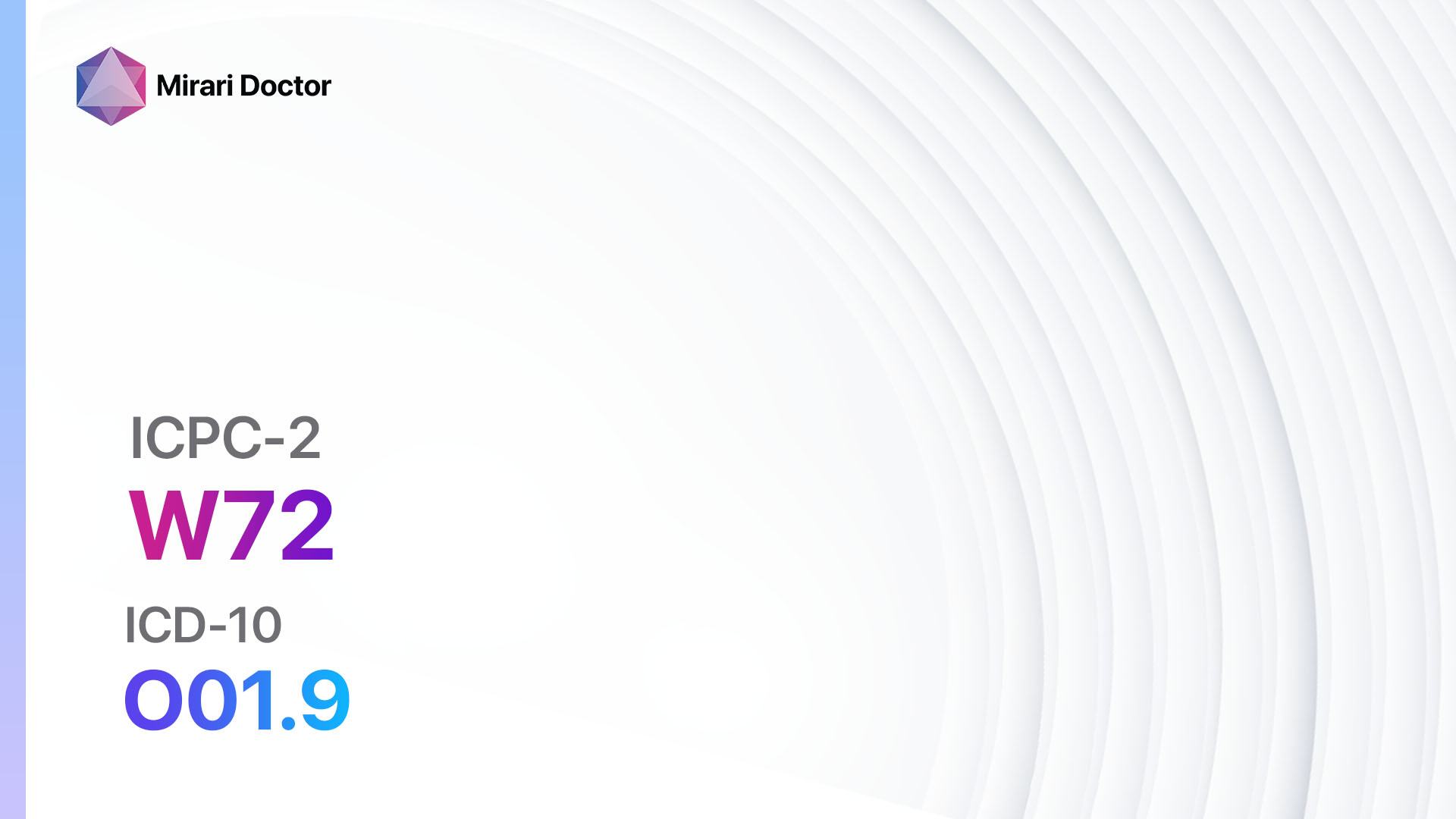
W72 Malignant neoplasm relate to pregnancy (ICD-10:O01.9)

W71 Infection complicating pregnancy (ICD-10:O23.9)
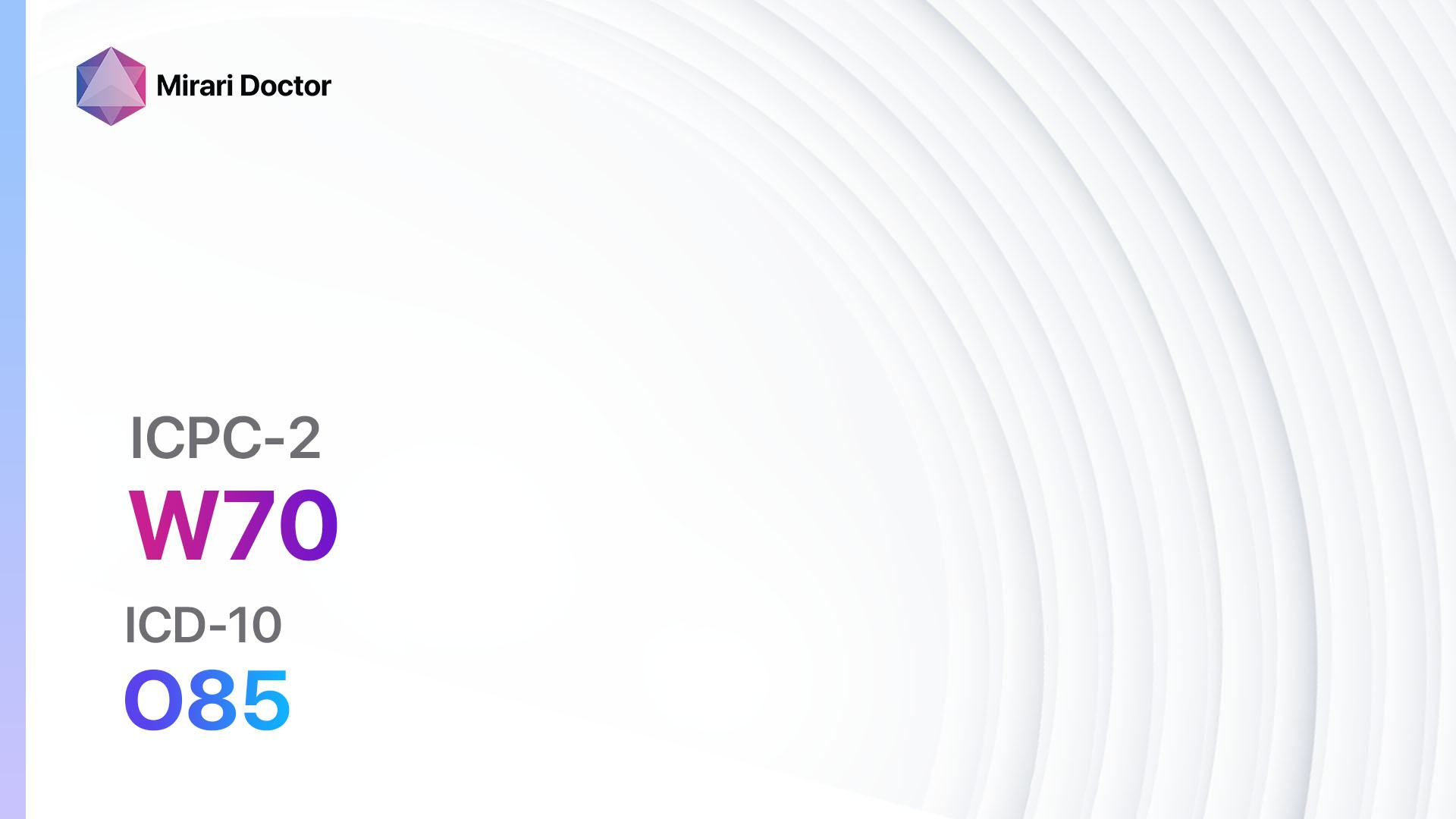
W70 Puerperal sepsis (ICD-10:O85)
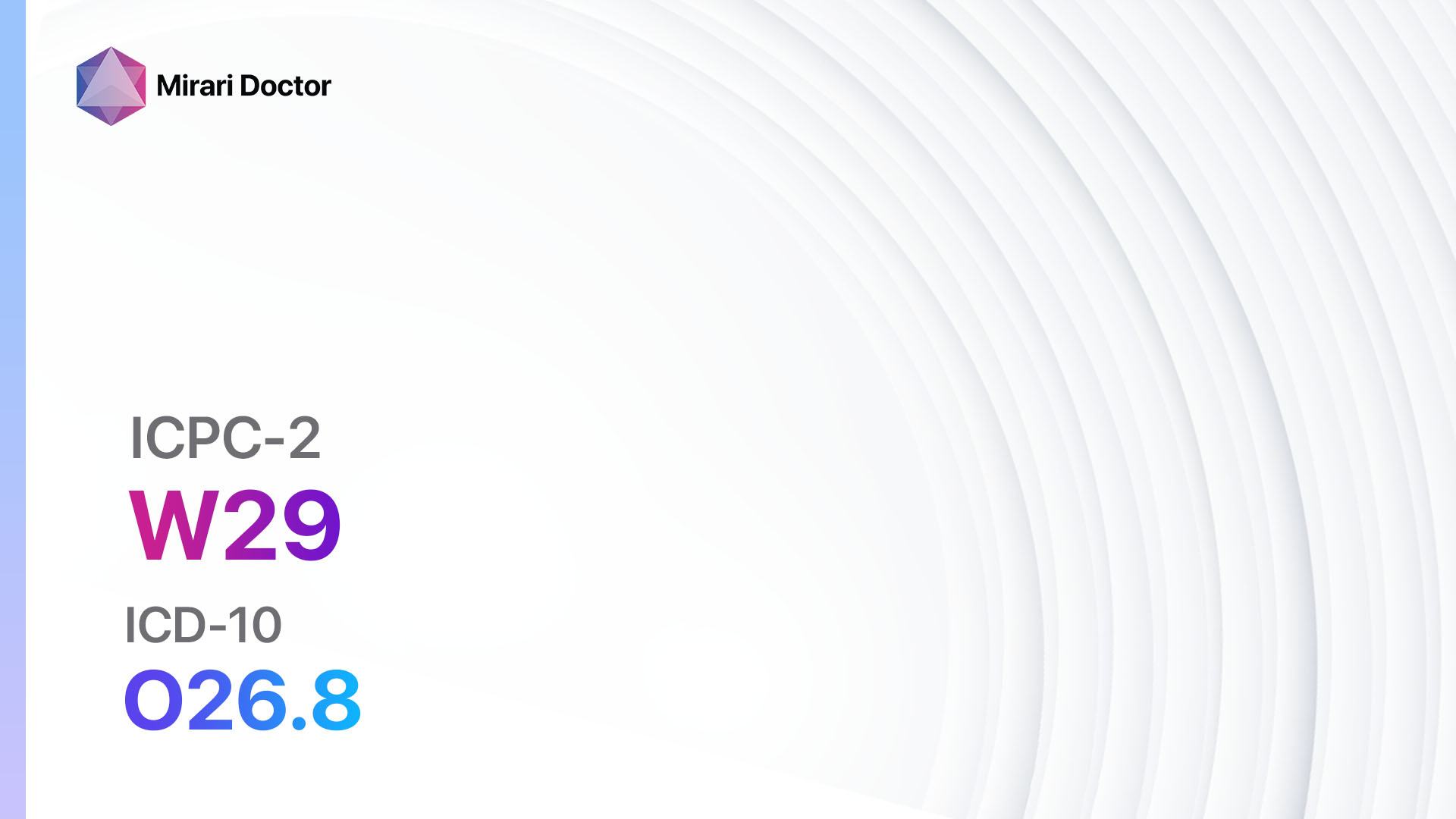
W29 Pregnancy symptom/complaint other (ICD-10:O26.8)
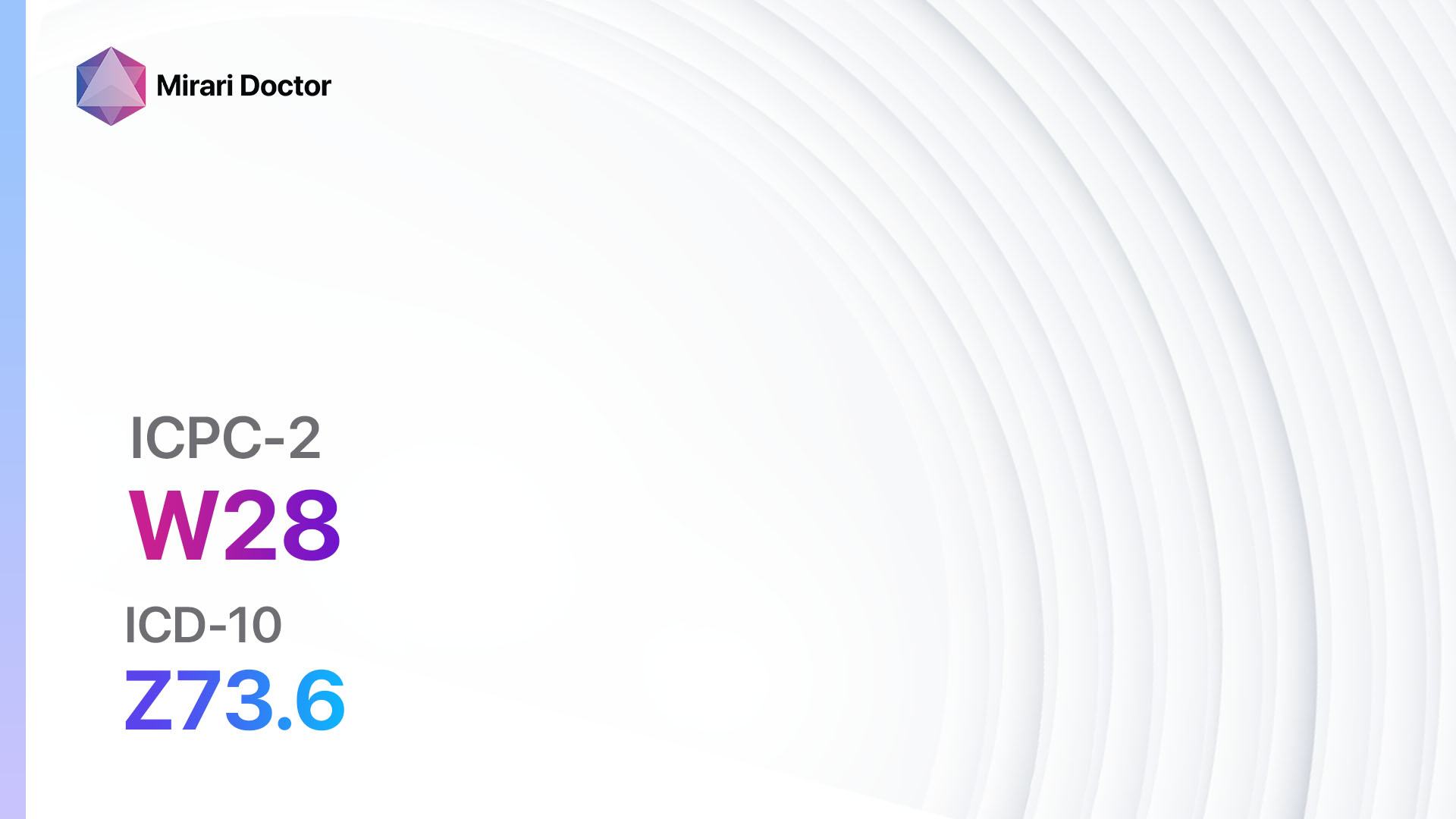
W28 Limited function/disability (w) (ICD-10:Z73.6)
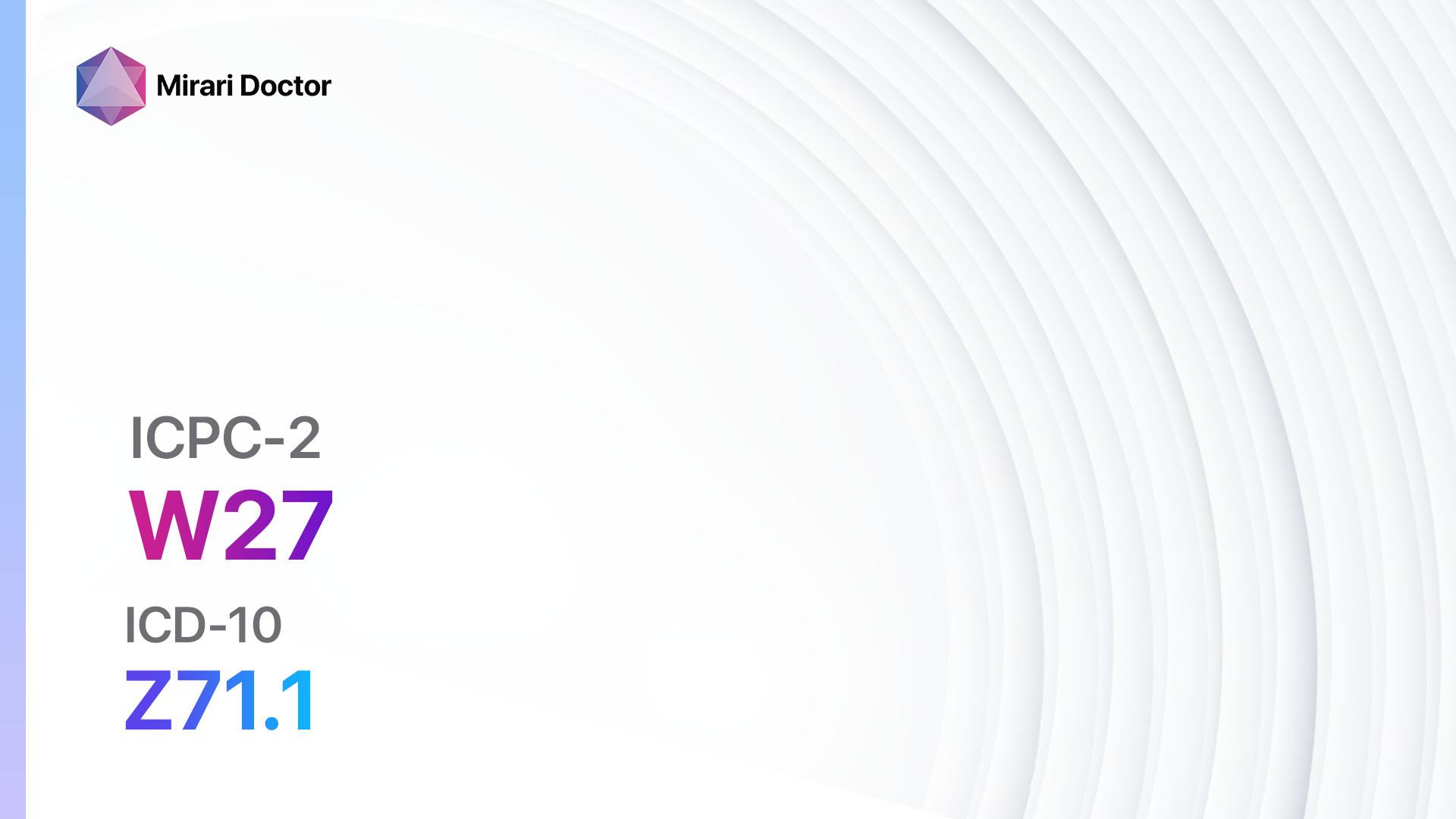
W27 Fear complication of pregnancy (ICD-10:Z71.1)
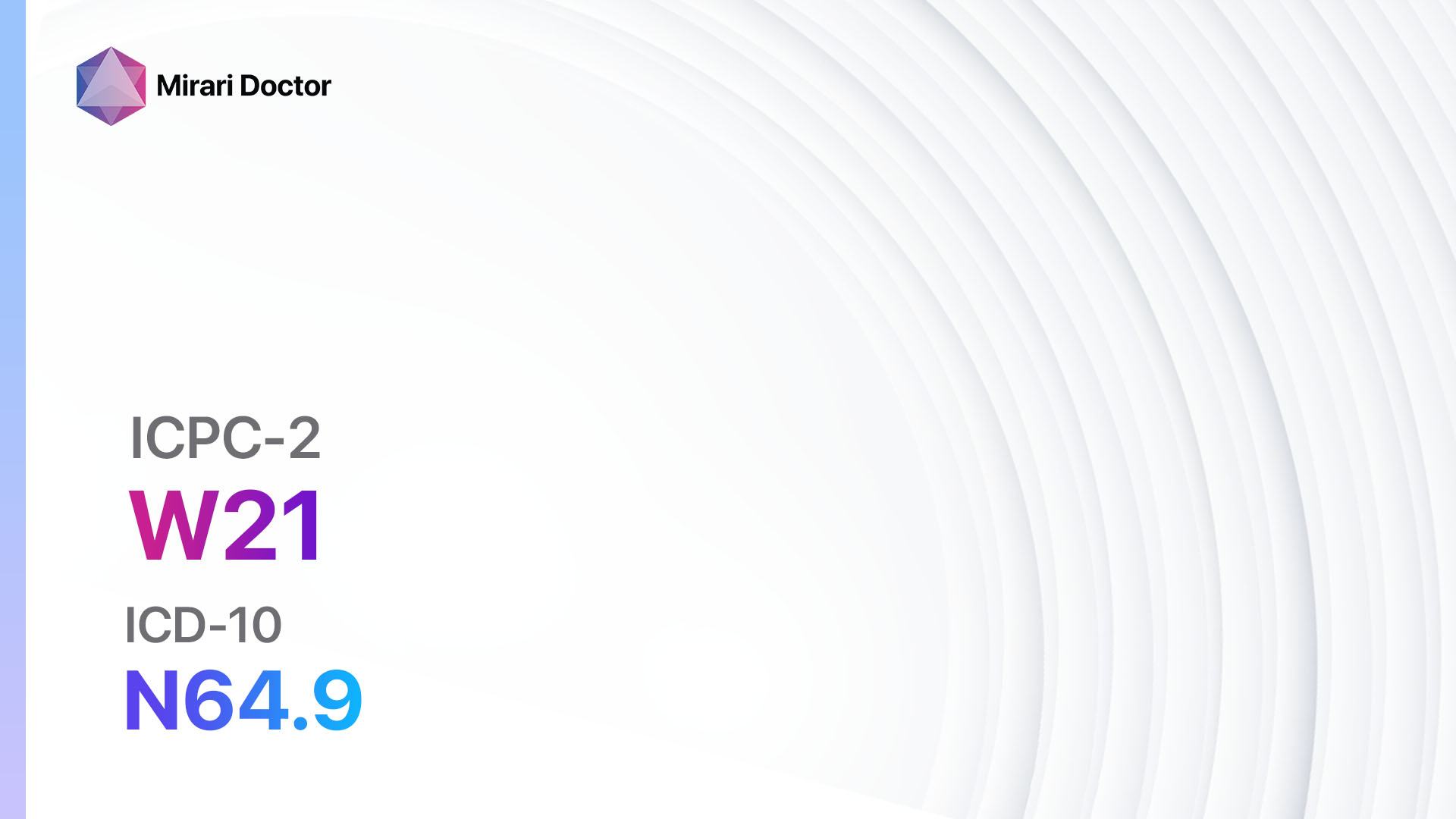
W21 Concern breast appearance female (ICD-10:N64.9)
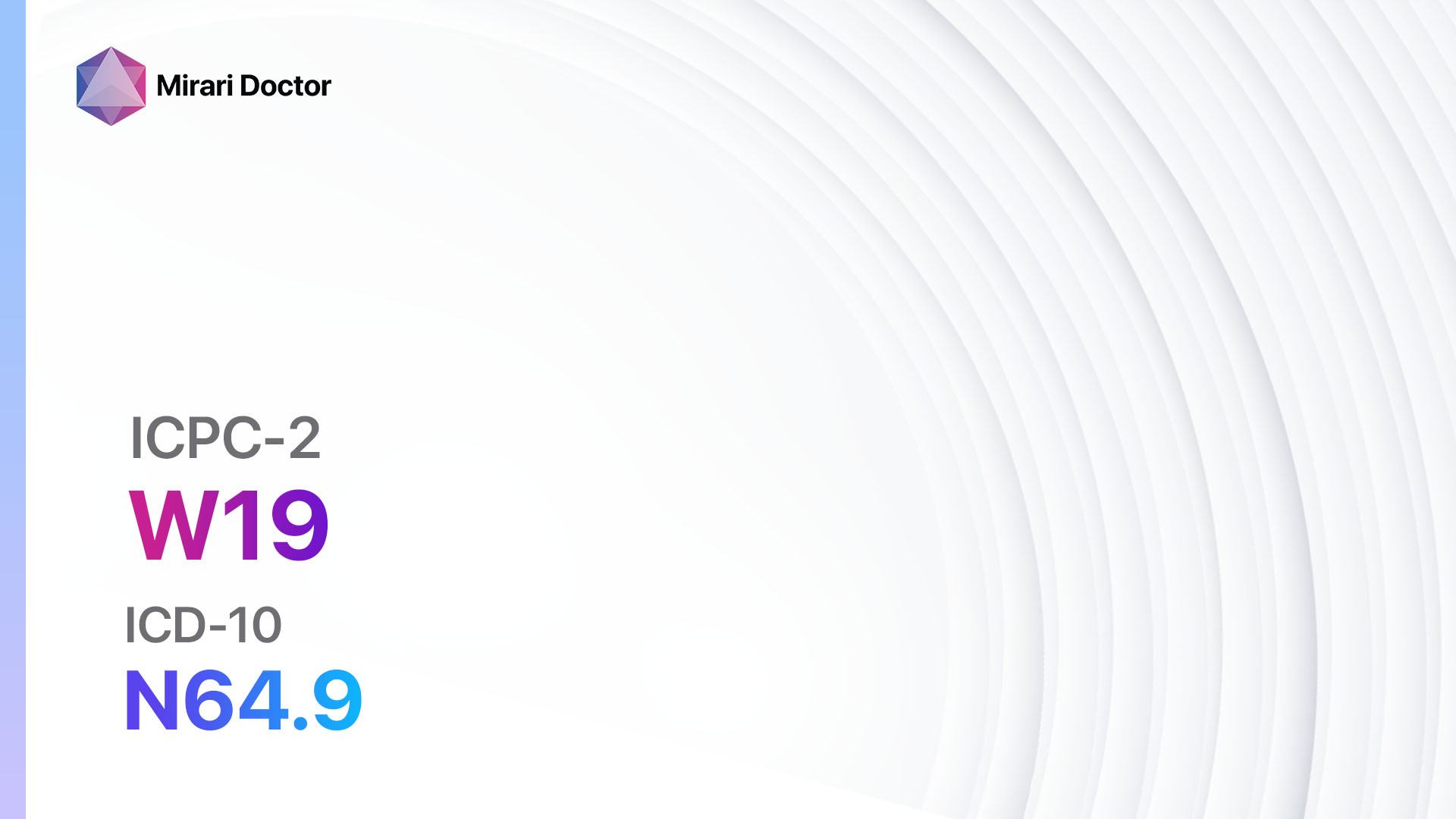
W19 Breast/nipple symptom/complaint (ICD-10:N64.9)
